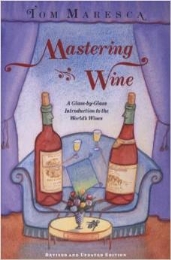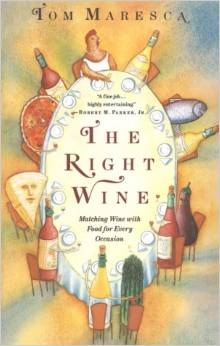In land mass, Portugal is one of the smallest countries in western Europe, but in terms of the number of grape varieties grown and kinds of wine produced, it’s right up there with its larger neighbors. The Wine Media Guild November meeting featured a generous selection of its wines – two dozen, to be precise – organized by WMG member David Ransom.
For a very pleasant and auspicious change from tastings of Portuguese wines I have attended in the past, these wines all had importers and hence are available on these shores, even if not in all stores. That eases my writerly conscience considerably, since I hate to write about wines that my readers can’t get hold of, even if sometimes there is just no avoiding it.
This time, that wasn’t a problem. However, I found the wines a very mixed bag, with most of the whites tasting – to my palate, that day – just ho-hum. So I’m going to focus here on the reds, which my palate that day found much more enjoyable and interesting. With very few exceptions, they were also quite reasonably priced, which is always welcome news.
Among Portugal’s many red varieties, three stand out, as much for their quality as their ubiquity across the country’s multiple wine zones: Touriga nacional, Touriga franca, and Baga. All three are first-rate wine grapes, the latter two most important in the Douro Valley and in north-central Portugal respectively, while Touriga nacional, as its name implies, seems to be grown everywhere. Once it was used only to make Port, but its rich aromas and flavors have long outgrown that restriction.
.
These all seem to be truly indigenous varieties, until quite recently planted nowhere outside Portugal, but how little is truly known about them is reflected in the brevity of the comments on them in Wine Grapes (Robinson, Harding, Vouillamoz), where all three are recognized as of very high quality, but awarded only a few paragraphs each. Wine Grapes distinguishes Baga as probably the variety with the greatest drinking and aging potential, though also, because it needs a long ripening season and Portugal’s Atlantic climate does not always allow that, the variety that can make the most disappointing wines – so worth seeking out, but find out all you can about vintages before buying.
There was only one wine at the tasting identified as a Baga (though I suspect Baga was at least a component in several others), and that was from the acknowledged master of the variety, Luis Pato: Luis Pato Bairrhada Tinto Vinhas Velhas 2015.
.
.
Even though young – Baga really needs time – this showed everything I expect of Baga and of Luis Pato. It was dark and brooding and deep, smelling of underbrush and black berries, smooth, almost velvety on the palate, and very long finishing. I’d want to drink this wine when it’s 20, if I could last that long. Not so by-the-way, Pato has a pre-phylloxera Baga vineyard that produces just extraordinary wine: Quinto do Ribeirinho Pé Franco. If you ever see it at anything resembling a reasonable price, by all means try it.
Two other wines really caught my attention that day: Julia Kemper Touriga Nacional 2011 and Chocapalha Castelão 2015.
.
.
The latter wine is vinified from the Castelão grape, which is sort of the Barbera of Portugal. It’s widely grown and yields a medium-bodied wine that in the best examples, of which this bottle is one, is delightfully fruity – berries and underbrush – and well-structured and makes just plain enjoyable drinking. Touriga nacional more resembles Sangiovese or, for Spanish wine fans, Tempranillo: good fruit, often intense and nervous, with fine structure and breed, that rewards cellaring. I found this Julia Kemper example quite classic – still vivacious at seven years of age and promising a much longer lifetime.
There were other red wines I enjoyed – Quinto do ValladoTouriga Nacional 2015, Quinto do Crasto Reserva Old Vines 2014, Wine & Soul Quinta da Manoella 2015, Joao Portugal Ramos Vila Santa Reserva 2013 – but the other real stand-out of the day for me was a lovely Madeira, Broadbent 10 Year Old Boal.
.
.
Madeira is a sadly underappreciated wine these days, and no matter how often publicists cite Thomas Jefferson’s love for it, it just never seems to catch on in this country. I’ll simply say this: If I were restricted to only one dessert wine for the rest of my life, I wouldn’t hesitate to choose Madeira. This Boal was perfect: the color a brilliant tawny amber, the nose big and rich, redolent of dried figs and apples, the palate balanced and harmonious, with the same flavors riding an undercurrent of tea and cacao, the finish long, long, long. It was a perfect way to end the tasting and the lunch.
I’m about to commit the biggest sin of omission available to wine journalists at this time of year: I’m not going to write about Champagne or sparkling wine. There are good reasons for this – the exalted price of so many of them, for one – but the compelling reason is that I’m bored with the endlessly repeated insistence that sparklers are an indispensable accompaniment to holiday festivities. Nonsense: There are plenty of fine, celebratory wines out there that will make your holidays just as enjoyable as any sparkler.
So, with that little bit of Bah Humbug! out of the way, let me wish you all a very Merry – and still – Christmas!








Buon Natale e Felice Anno Nuovo da Venezia. Livio e Betty
And a very non-humbug holiday to you
Thanks, Jonathan.